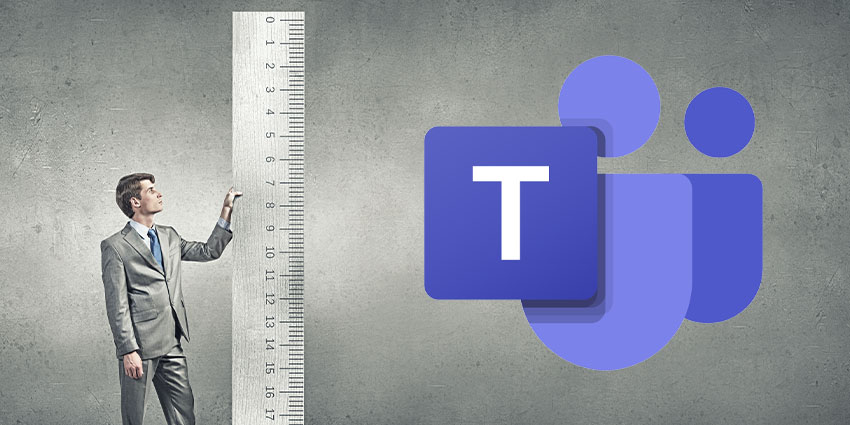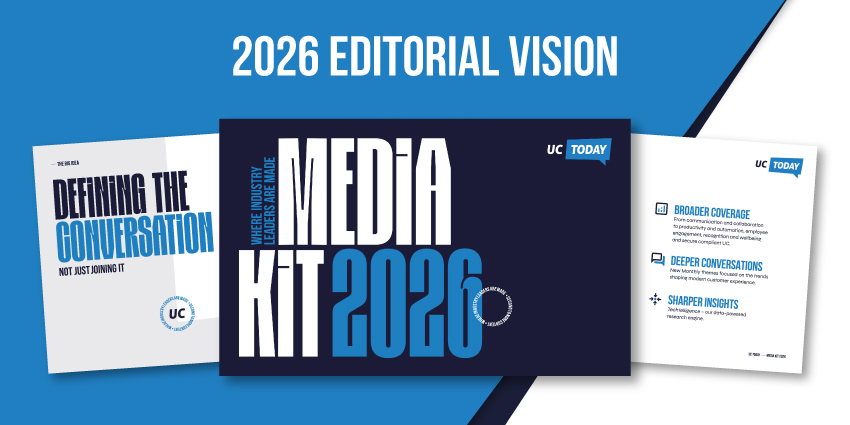Microsoft Teams has the power to transform the way companies work in a massive scale. Now more than ever, companies are looking for tools to bring people together wherever they are in the world. Hybrid work is the solution of the future, and Teams ensures that staff can stay connected wherever they are, through video, chat, and more.
Of course, to leverage the benefits of Teams, you first need the right adoption strategy. As Microsoft’s own “FastTrack” adoption guide tells us, driving adoption is a constant cycle which doesn’t end after launching the new tech.
So, how do you know that your plan for delivering Teams is really working? Fortunately, there are ways to measure and track the impact of your Teams efforts.
Start with Microsoft’s Productivity Score
Microsoft’s Productivity Score feature has faced some controversy in the past, but it can be a valuable tool for measuring the success of your Teams adoption rollout. Productivity Score offers insights into how your organisation uses Microsoft 365, including the Teams application. The technology provides helpful overviews into usage – perfect for determining how wide the adoption is in your business.
You can use Microsoft Productivity score to examine:
- Metrics for your digital transformation journey
- Insights into the opportunities for improving productivity and adoption
- Recommended actions to help you use Microsoft effectively
Productivity score in Microsoft is calculated for the full Microsoft 365 ecosystem. The technology measures productivity in things like content collaboration, meetings, communication, endpoint usage, network connectivity and app health to offer a better overview. Each category is scored out of 100, and Microsoft provides a full 28-day and 180-day view to choose from.
Notably, Microsoft divides its productivity score recommendations into two areas:
- People experiences: This outlines how you can support your team in using Microsoft for collaboration, communication, and meetings. For each category, Microsoft examines research to identify best practices for your adoption plan.
- Technology experiences: This is where Microsoft uses endpoint analytics to showcase how organizations can be impacted by health and performance issues with your software and hardware
The home page for Productivity Score shows how your organisation’s total score and score history adds up, along with useful insights for each category, like mobility or teamwork
Explore Microsoft Workplace Analytics
Aside from Productivity score, Microsoft also offers the “Workplace Analytics” feature, which provides data-driven insights into work patterns in your organisation. Once again, this functionality is fantastic if you’re struggling to measure adoption in your workplace. The Analytics environment provides de-identified, and aggregated insights into how people spend their time.
Workplace Analytics provides actionable recommendations and insights, with visibility into work patterns that might cause burnout. Default safeguards like differential privacy protection, aggregation, and more help to reduce the risk of privacy problems.
The Workplace Analytics environment focuses on three key areas:
- Manager effectiveness: Overviews of how managers interact with employees – potentially allowing for new coaching opportunities
- Employee wellbeing: Overviews into departments at risk of burnout issues, helping to improve work-life balance
- Organisational agility: Overviews of the ways that people use their time, and how they can streamline operations and performance
Unlike productivity score, Workplace Analytics is more focused on executives and managers, providing a comprehensive data-driven view of how organisations operate. There’s also a sister product called “MyAnalytics” to help with providing individual overviews for today’s workforce. MyAnalytics also provides managers with the opportunity to assign potential “plans” for growth to each individual employee.
My Analytics covers all the Microsoft Teams chat and calling environments, so it’s great when you’re looking into the impact that something like Microsoft UCaaS can have on your business. Additionally, there’s also access to things like R Package toolkit analytics.
Connect with Your Employees
The intelligent insights and data available from Microsoft Teams and the surrounding tools is excellent for getting an overview of adoption success. However, you should always consider the feedback and comments of your team members too. While things like quantitative data metrics and graphs will appeal to shareholders, qualitative discussions with employees about end-user satisfaction will always be a great way to ensure adoption.
You can start with simple user satisfaction surveys, sent through Microsoft Teams as a way to gather insights and information about what your employees really enjoy, or dislike when using Teams. Microsoft’s app store also comes packed with tools to help you generate more extensive feedback too. There are services for running polls, issuing automated daily check ins and more.
Similarly, it’s worth hosting regular group meetings with your employees throughout the adoption process. Roll out your technology slowly, starting with champions and early adopters, and ask for their feedback on solutions you can improve. When the time comes to roll out your Teams system fully, make sure you’re constantly checking in on your employees’ opinions.
You can even set up a strategy within Teams which allows your team members to issue requests on the kind of educational opportunities they might need. This will show you where you should be investing in coaching going forward.
Don’t forget to collect as much potential feedback as possible for supervisors and managers too. They should be able to tell you more about which tools your staff are regularly asking for help with, or which issues your teams face most often.
Encourage your individual team members to look at their personal insights and analytics for an overview of what kind of features they might need to access or learn how to use better.
Constantly Collect Information
Ensuring successful adoption of any new technology can be complex in today’s work environment. We’re now working with a wider selection of different generations and indivduals, spread across a transforming hybrid work environment. In this landscape, everyone needs to be committed to aligning the team on the same, shared productivity ecosystem.
Fortunately, Microsoft’s technology is designed to keep everyone informed, from individuals, to business leaders. Keep an eye on your adoption levels, and make sure you’re ready to respond to your staff’s needs.







